
7 The David Whitney Building is a historic class-A skyscraper located at 1 Park Avenue (1550 Woodward Avenue from 1921 to 2014), on the northern edge of Downtown Detroit, Michigan, within the Grand Circus Park Historic District. The building stands on a wedge-shaped site at the junction of Park Avenue, Woodward Avenue, and Washington Boulevard. Construction on the 19-floor structure began in 1914
The building is named for David Whitney Jr., a wealthy Detroiter who earned millions of dollars as a lumber baron dealing in white pine; his father was said to be the employer of Paul Bunyan. The structure was designed by Graham, Burnham & Co., the successor firm to the D.H. Burnham Company. It may be said that the building was designed in the "Daniel Burnham style", or perhaps, "inspired by Daniel Burnham". The first assertion that Daniel Burnham himself designed the building was made in a 1950s press article about the building's modernization, probably a misreading (or embellishment). Burnham died in 1912, two years before the project was announced, and no contemporary record gives any indication that he was involved with the design of the building prior to his death.
The building is named for David Whitney Jr., a wealthy Detroiter who earned millions of dollars as a lumber baron dealing in white pine; his father was said to be the employer of Paul Bunyan. The structure was designed by Graham, Burnham & Co., the successor firm to the D.H. Burnham Company. It may be said that the building was designed in the "Daniel Burnham style", or perhaps, "inspired by Daniel Burnham". The first assertion that Daniel Burnham himself designed the building was made in a 1950s press article about the building's modernization, probably a misreading (or embellishment). Burnham died in 1912, two years before the project was announced, and no contemporary record gives any indication that he was involved with the design of the building prior to his death.

8 The Book Tower stands as a majestic symbol of Detroit's architectural and literary heritage, dominating the city skyline with its neo-gothic grandeur. Designed by renowned architect Louis Kamper and completed in 1926, this historic skyscraper originally served as a testament to Detroit's thriving publishing industry. Rising 475 feet above street level, the tower was once the tallest building in Detroit and the fourth tallest in the United States, flaunting its 38 floors adorned with intricate details reminiscent of medieval European cathedrals. Its distinctive façade features ornate terracotta embellishments and elaborate carvings, capturing the essence of the roaring twenties' architectural opulence.
Beyond its architectural magnificence, the Book Tower holds a rich history deeply intertwined with Detroit's cultural fabric. Initially conceived as an iconic hub for the city's literary and publishing elites, the tower housed numerous publishing companies and printing presses within its walls. Over the decades, it evolved into a multifaceted symbol of Detroit's resilience, weathering economic downturns and urban transformations. Despite periods of neglect and decline, the Book Tower remained a steadfast presence, serving as a reminder of the city's storied past and a beacon of hope for its revitalization. Today, ongoing restoration efforts seek to preserve its architectural splendor while repurposing its interior spaces for contemporary use, ensuring that the Book Tower continues to stand as a timeless monument to Detroit's history and spirit.
Beyond its architectural magnificence, the Book Tower holds a rich history deeply intertwined with Detroit's cultural fabric. Initially conceived as an iconic hub for the city's literary and publishing elites, the tower housed numerous publishing companies and printing presses within its walls. Over the decades, it evolved into a multifaceted symbol of Detroit's resilience, weathering economic downturns and urban transformations. Despite periods of neglect and decline, the Book Tower remained a steadfast presence, serving as a reminder of the city's storied past and a beacon of hope for its revitalization. Today, ongoing restoration efforts seek to preserve its architectural splendor while repurposing its interior spaces for contemporary use, ensuring that the Book Tower continues to stand as a timeless monument to Detroit's history and spirit.

9 The Book Tower stands as a majestic symbol of Detroit's architectural and literary heritage, dominating the city skyline with its neo-gothic grandeur. Designed by renowned architect Louis Kamper and completed in 1926, this historic skyscraper originally served as a testament to Detroit's thriving publishing industry. Rising 475 feet above street level, the tower was once the tallest building in Detroit and the fourth tallest in the United States, flaunting its 38 floors adorned with intricate details reminiscent of medieval European cathedrals. Its distinctive façade features ornate terracotta embellishments and elaborate carvings, capturing the essence of the roaring twenties' architectural opulence.
Beyond its architectural magnificence, the Book Tower holds a rich history deeply intertwined with Detroit's cultural fabric. Initially conceived as an iconic hub for the city's literary and publishing elites, the tower housed numerous publishing companies and printing presses within its walls. Over the decades, it evolved into a multifaceted symbol of Detroit's resilience, weathering economic downturns and urban transformations. Despite periods of neglect and decline, the Book Tower remained a steadfast presence, serving as a reminder of the city's storied past and a beacon of hope for its revitalization. Today, ongoing restoration efforts seek to preserve its architectural splendor while repurposing its interior spaces for contemporary use, ensuring that the Book Tower continues to stand as a timeless monument to Detroit's history and spirit.
Beyond its architectural magnificence, the Book Tower holds a rich history deeply intertwined with Detroit's cultural fabric. Initially conceived as an iconic hub for the city's literary and publishing elites, the tower housed numerous publishing companies and printing presses within its walls. Over the decades, it evolved into a multifaceted symbol of Detroit's resilience, weathering economic downturns and urban transformations. Despite periods of neglect and decline, the Book Tower remained a steadfast presence, serving as a reminder of the city's storied past and a beacon of hope for its revitalization. Today, ongoing restoration efforts seek to preserve its architectural splendor while repurposing its interior spaces for contemporary use, ensuring that the Book Tower continues to stand as a timeless monument to Detroit's history and spirit.

10 The Book Tower stands as a majestic symbol of Detroit's architectural and literary heritage, dominating the city skyline with its neo-gothic grandeur. Designed by renowned architect Louis Kamper and completed in 1926, this historic skyscraper originally served as a testament to Detroit's thriving publishing industry. Rising 475 feet above street level, the tower was once the tallest building in Detroit and the fourth tallest in the United States, flaunting its 38 floors adorned with intricate details reminiscent of medieval European cathedrals. Its distinctive façade features ornate terracotta embellishments and elaborate carvings, capturing the essence of the roaring twenties' architectural opulence.
Beyond its architectural magnificence, the Book Tower holds a rich history deeply intertwined with Detroit's cultural fabric. Initially conceived as an iconic hub for the city's literary and publishing elites, the tower housed numerous publishing companies and printing presses within its walls. Over the decades, it evolved into a multifaceted symbol of Detroit's resilience, weathering economic downturns and urban transformations. Despite periods of neglect and decline, the Book Tower remained a steadfast presence, serving as a reminder of the city's storied past and a beacon of hope for its revitalization. Today, ongoing restoration efforts seek to preserve its architectural splendor while repurposing its interior spaces for contemporary use, ensuring that the Book Tower continues to stand as a timeless monument to Detroit's history and spirit.
Beyond its architectural magnificence, the Book Tower holds a rich history deeply intertwined with Detroit's cultural fabric. Initially conceived as an iconic hub for the city's literary and publishing elites, the tower housed numerous publishing companies and printing presses within its walls. Over the decades, it evolved into a multifaceted symbol of Detroit's resilience, weathering economic downturns and urban transformations. Despite periods of neglect and decline, the Book Tower remained a steadfast presence, serving as a reminder of the city's storied past and a beacon of hope for its revitalization. Today, ongoing restoration efforts seek to preserve its architectural splendor while repurposing its interior spaces for contemporary use, ensuring that the Book Tower continues to stand as a timeless monument to Detroit's history and spirit.



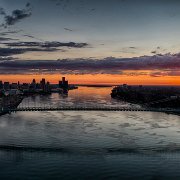

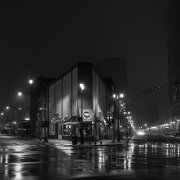






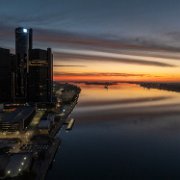
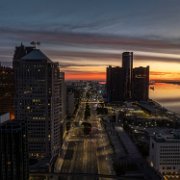

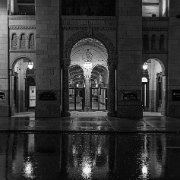
Michigan